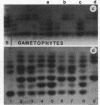Abstract
Homosporous ferns have usually been considered highly polyploid because they have high chromosome numbers (average n = 57.05). In angiosperms, species with chromosome numbers higher than n = 14 generally have more isozymes than those with lower numbers, consistent with their polyploidy. By extrapolation, homosporous ferns would be expected to have many isozymes. However, ongoing surveys indicate that within fern genera, species having the lowest chromosome numbers have the number of isozymes considered typical of diploid seed plants. Only species above these lowest numbers have additional isozymes. Therefore, homosporous ferns either have gone through repeated cycles of polyploidy and gene silencing or were initiated with relatively high chromosome numbers. The latter possibility represents a radical departure from currently advocated hypotheses of fern evolution and suggests that there may be fundamental differences between the genomes of homosporous ferns and those of higher plants. These hypotheses can be tested by genetic, karyological, and molecular techniques.
Keywords: Pteridophyta, diploidy, polyploidy, electrophoresis, isozymes
Full text
PDF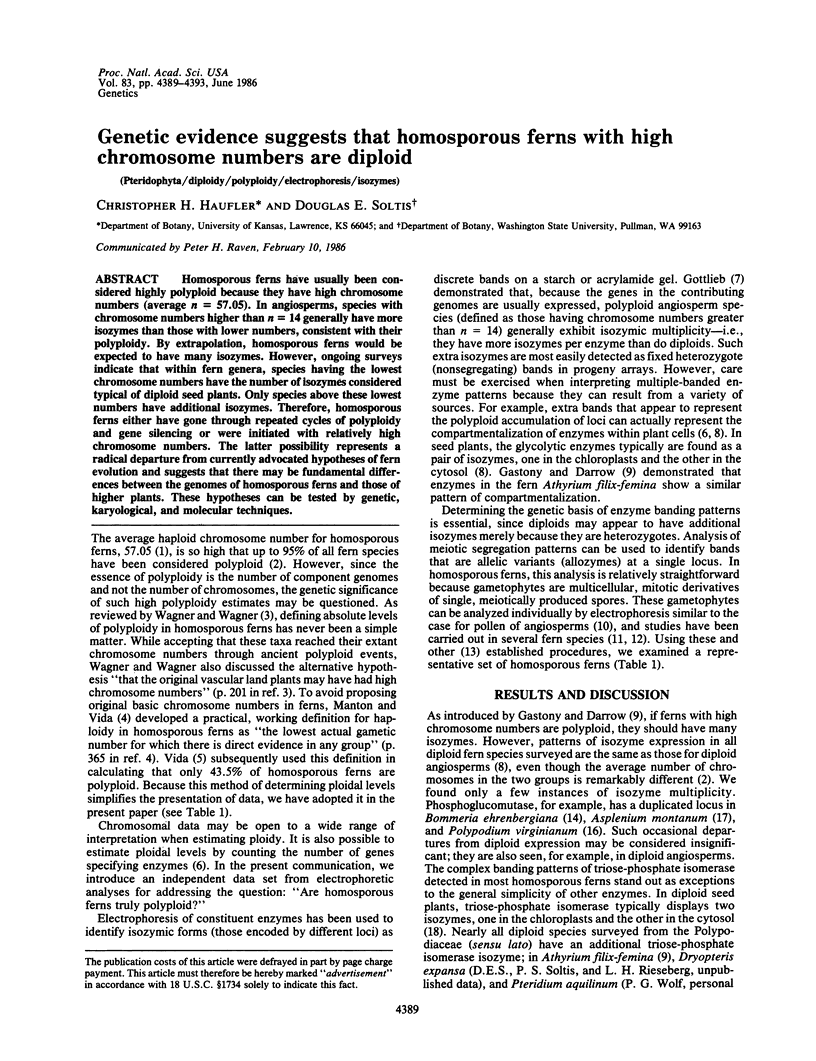
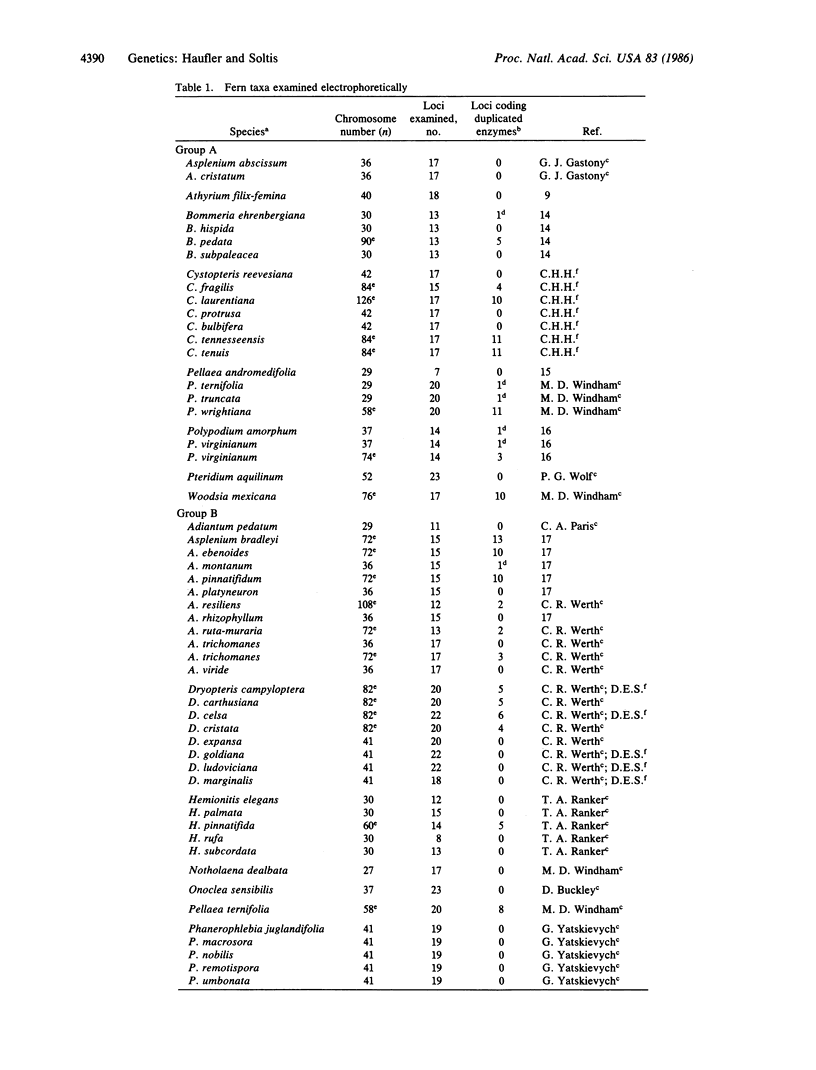
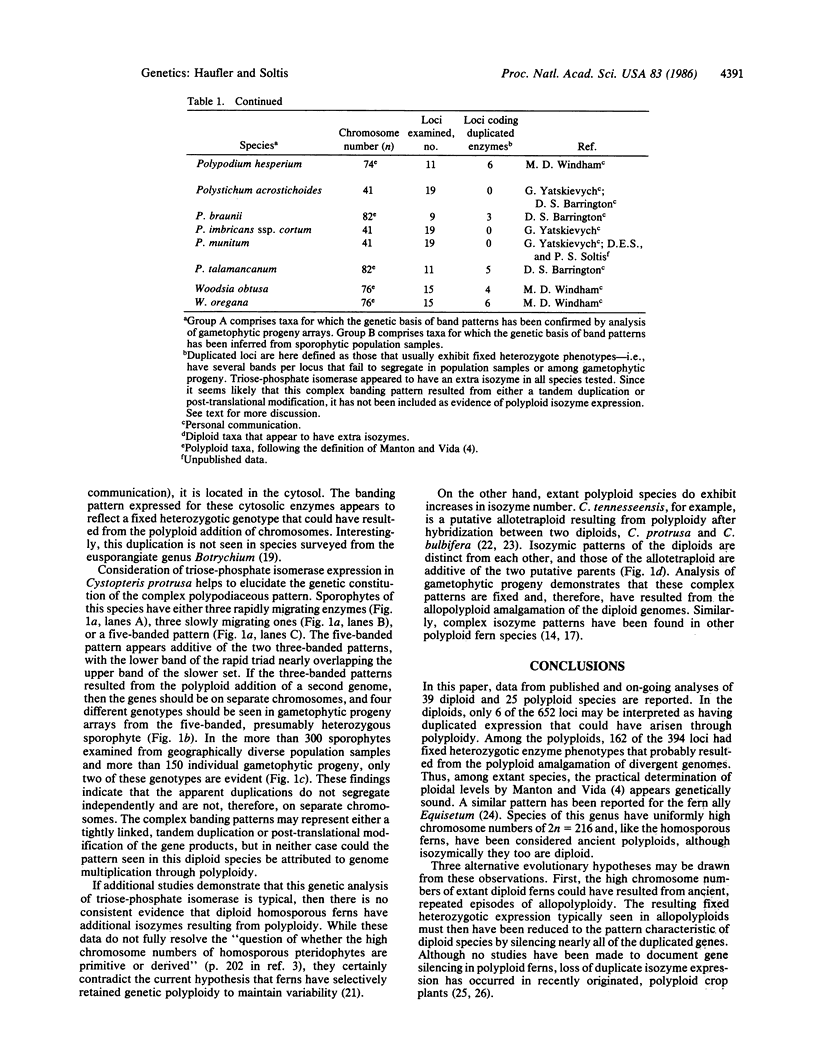
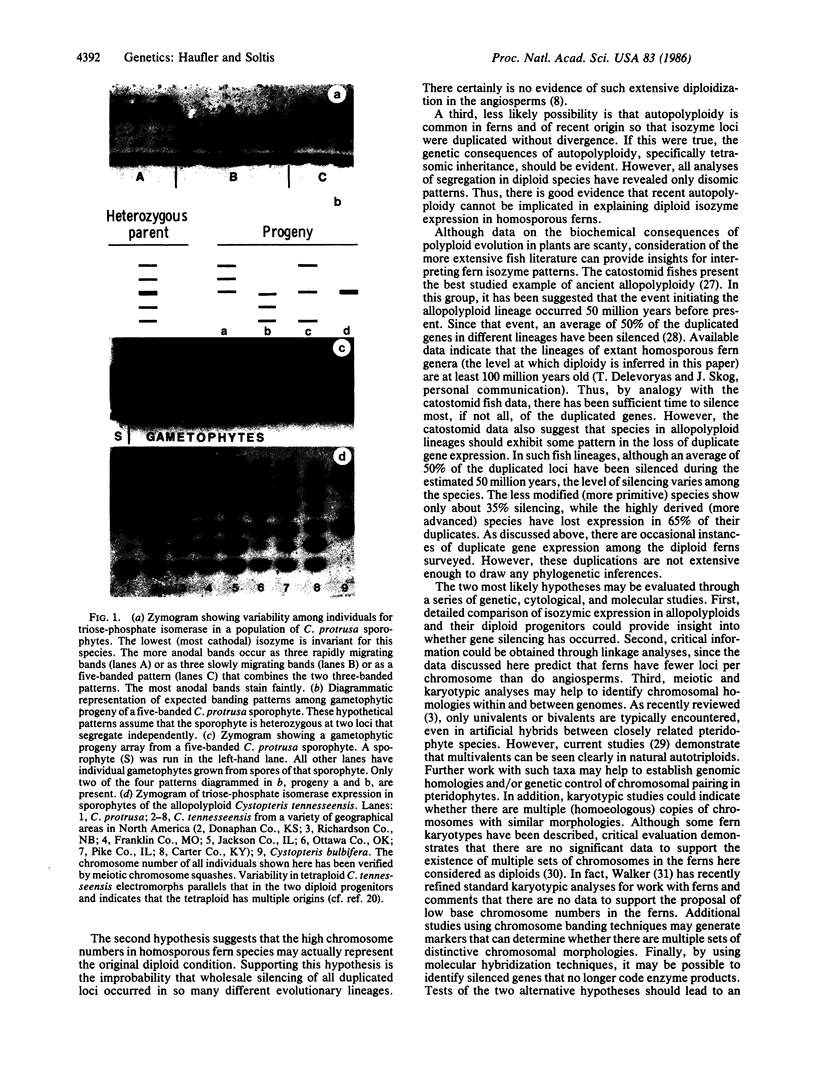
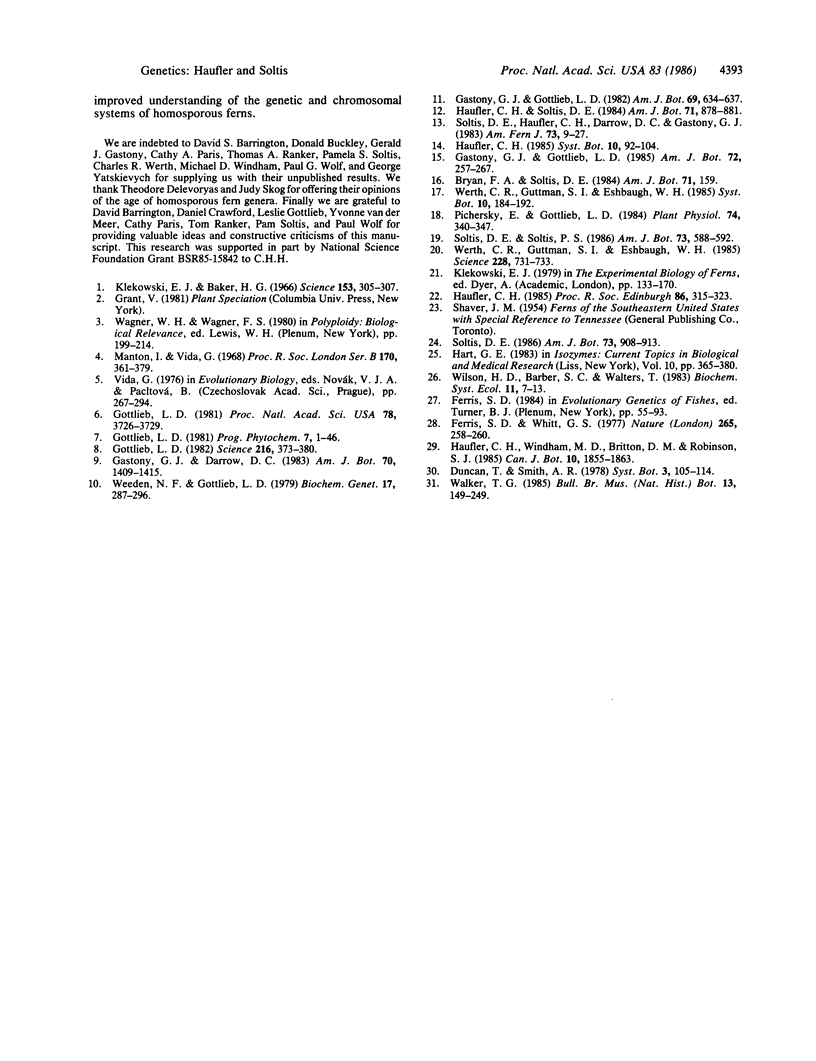
Images in this article
Selected References
These references are in PubMed. This may not be the complete list of references from this article.
- Ferris S. D., Whitt G. S. Loss of duplicate gene expression after polyploidisation. Nature. 1977 Jan 20;265(5591):258–260. doi: 10.1038/265258a0. [DOI] [PubMed] [Google Scholar]
- Gottlieb L. D. Conservation and duplication of isozymes in plants. Science. 1982 Apr 23;216(4544):373–380. doi: 10.1126/science.216.4544.373. [DOI] [PubMed] [Google Scholar]
- Gottlieb L. D. Gene number in species of Astereae that have different chromosome numbers. Proc Natl Acad Sci U S A. 1981 Jun;78(6):3726–3729. doi: 10.1073/pnas.78.6.3726. [DOI] [PMC free article] [PubMed] [Google Scholar]
- Hart G. E. Genetics and evolution of multilocus isozymes in hexaploid wheat. Isozymes Curr Top Biol Med Res. 1983;10:365–380. [PubMed] [Google Scholar]
- Klekowski E. J., Jr, Baker H. G. Evolutionary significance of polyploidy in the pteridophyta. Science. 1966 Jul 15;153(3733):305–307. doi: 10.1126/science.153.3733.305. [DOI] [PubMed] [Google Scholar]
- Pichersky E., Gottlieb L. D. Plant triose phosphate isomerase isozymes : purification, immunological and structural characterization, and partial amino Acid sequences. Plant Physiol. 1984 Feb;74(2):340–347. doi: 10.1104/pp.74.2.340. [DOI] [PMC free article] [PubMed] [Google Scholar]
- Weeden N. F., Gottlieb L. D. Distinguishing allozymes and isozymes of phosphoglucoisomerases by electrophoretic comparisons of pollen and somatic tissues. Biochem Genet. 1979 Apr;17(3-4):287–296. doi: 10.1007/BF00498969. [DOI] [PubMed] [Google Scholar]
- Werth C. R., Guttman S. I., Eshbaugh W. H. Recurring origins of allopolyploid species in asplenium. Science. 1985 May 10;228(4700):731–733. doi: 10.1126/science.228.4700.731. [DOI] [PubMed] [Google Scholar]




